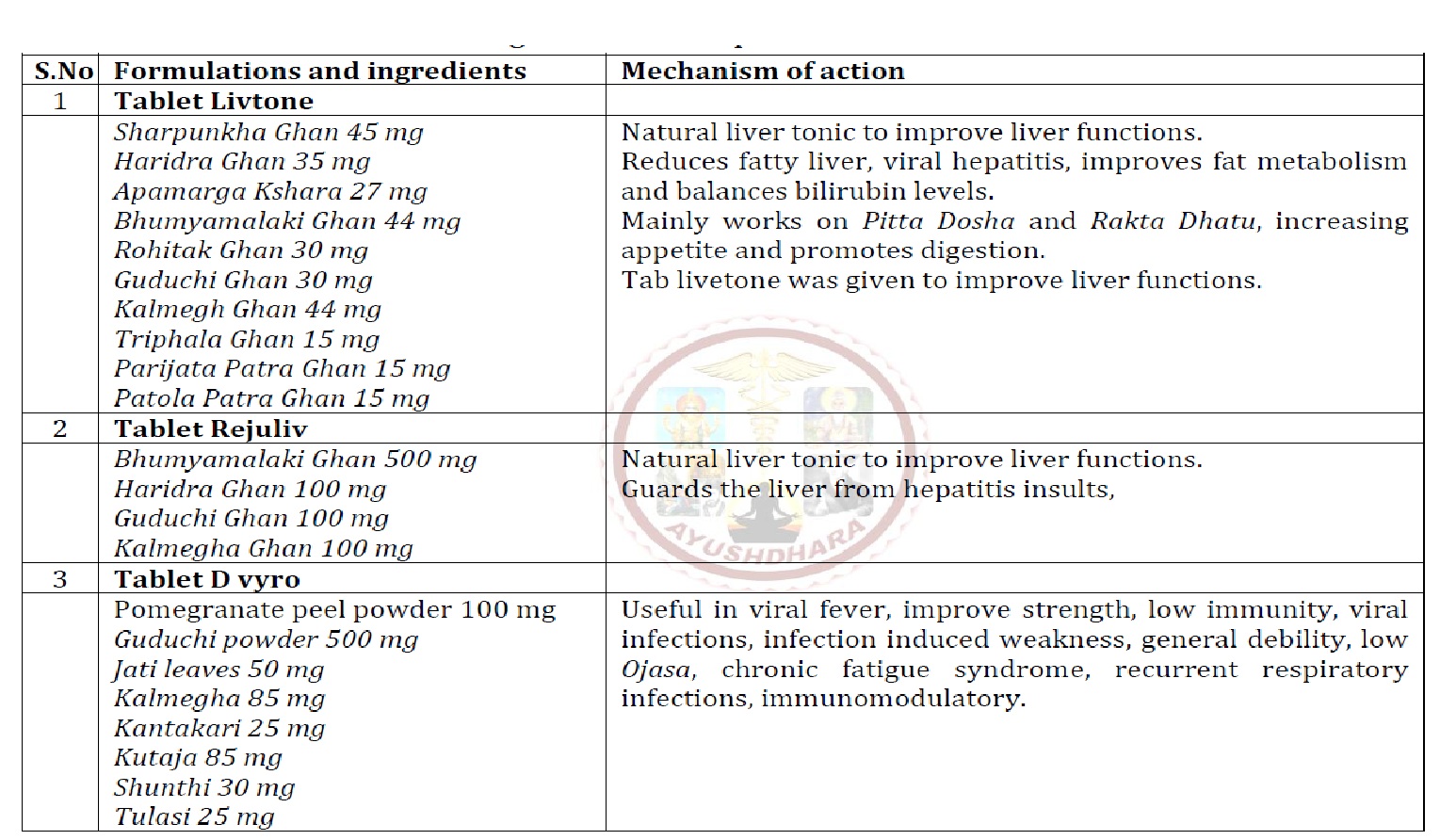Reduction on Quantitative Viral Load in Hepatitis B: A Case Report of Successful Management Through Ayurveda
DOI:
https://doi.org/10.47070/ayushdhara.v12i1.1910Keywords:
Ayurveda, Kamala, Hepatitis B, Viral loadAbstract
Hepatitis B is one of the most prevalent causes of liver illness and is more likely to spread since people are not aware of the precautions. It is correlated with Kamala disease and shows chief symptoms like abdominal pain, vomiting, and yellowish discoloration in eyes, body, and urine etc. This case presents effectiveness of Ayurveda treatment in reducing symptoms and viral load in hepatitis case. A male patient of 64 years came to OPD of Ayushakti Ayurved Pvt Ltd. with hepatitis B positive result with complaints of weakness, fatigue, body pain, gas and acidity, pain in abdomen, recurrent throat infection. He was analysed clinically; the vitals were stable. After clinical examination, he was given tablet Livtone, D-vyro, for 3 months and Tablet Jivanyoga, Rejuliv, Immuno for next 3 months. Tab Gulkacid was kept continued across the treatment. After 6 months of treatment patient found good relief in symptoms and significant changes were reflected in laboratory parameters where viral load was decreased from 44 IU/ml (256 copies/ml) to 20 IU/ml (116 copies/ml), change in log value from 1.64 to 1.30. The ingredient of each tablet along with rational of prescriptions has been discussed in this paper.
Downloads

Downloads
Published
Issue
Section
License
Copyright (c) 2025 AYUSHDHARA

This work is licensed under a Creative Commons Attribution-NonCommercial-ShareAlike 4.0 International License.


